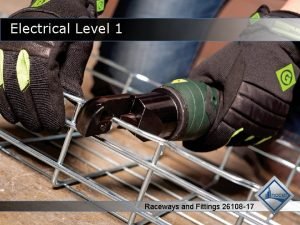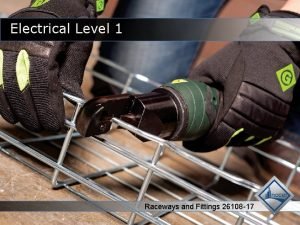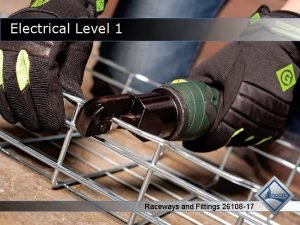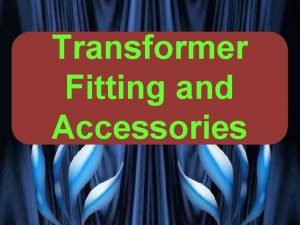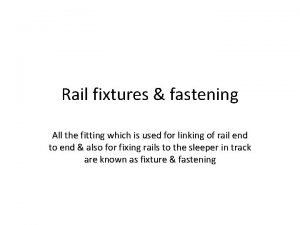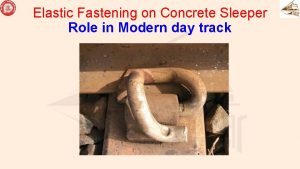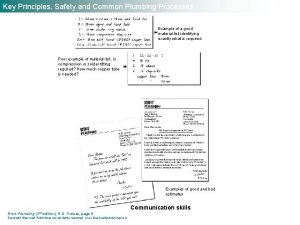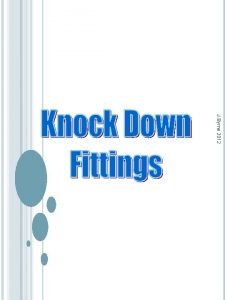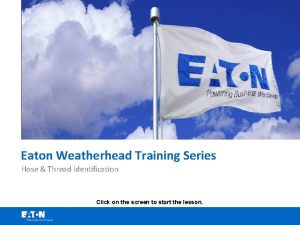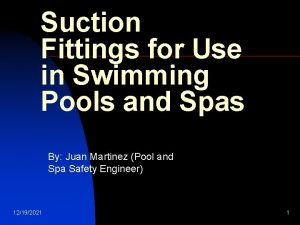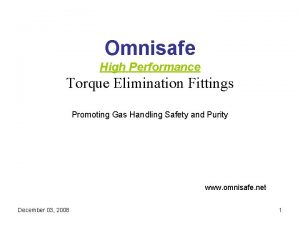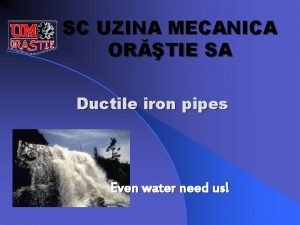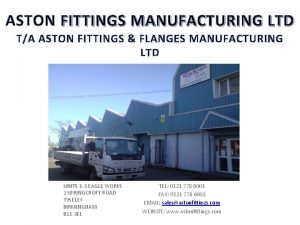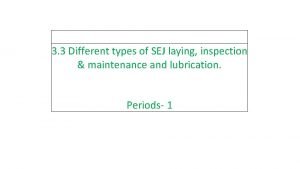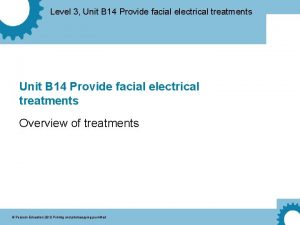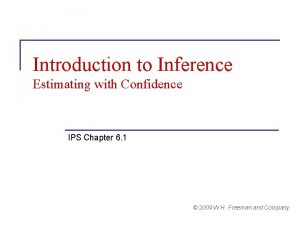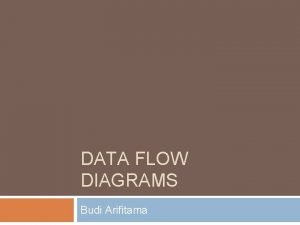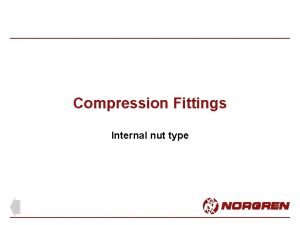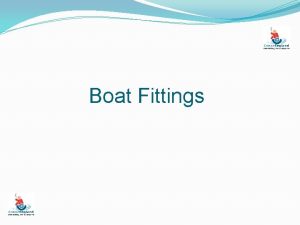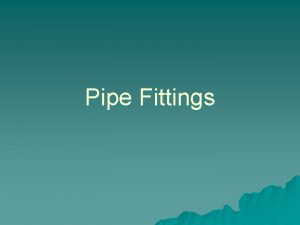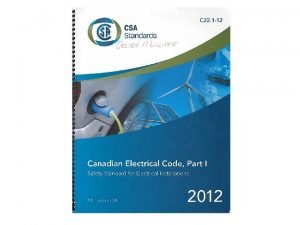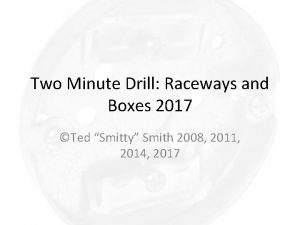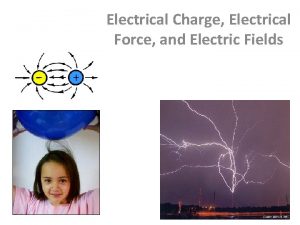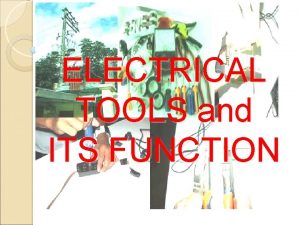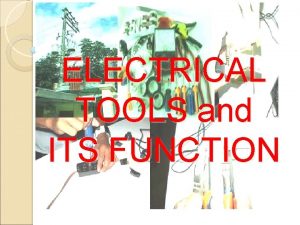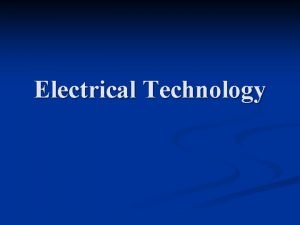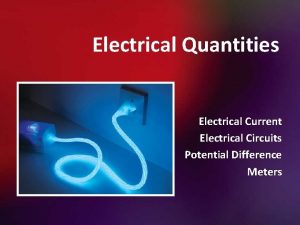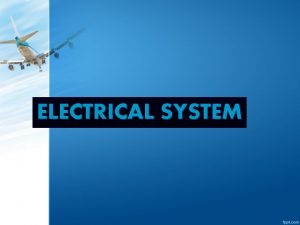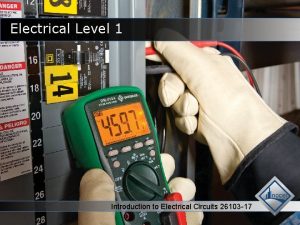Electrical Level 1 Raceways and Fittings 26108 17























- Slides: 23

Electrical Level 1 Raceways and Fittings 26108 -17

Sessions 4 – 6: Selecting Fasteners and Anchors Raceways and Fittings 26108 -17

Objectives When you have completed this session, you should be able to do the following: 2. Select fasteners and anchors for the installation of raceway systems. a. Select and install tie wraps. b. Select and install screws. c. Select and install hammer-driven pins and studs. d. Identify the safety requirements for stud-type guns. e. Select and install masonry anchors. f. Select and install hollow-wall anchors. g. Select and install epoxy anchoring systems. Raceways and Fittings 26108 -17

Performance Tasks 2. Identify and select various types and sizes of raceways, fittings, and fasteners for a given application. 3. Demonstrate how to install a raceway system. 4. Terminate a selected raceway system. Raceways and Fittings 26108 -17

2. 0. 0– 2. 1. 0 Fasteners and Anchors • Many types of fasteners are used to attach conduit to a building structure. The type of fastener selected depends on whether the conduit is connected to wood, concrete, or metal. • Tie wraps are used to bundle and identify cable. Tie wraps Raceways and Fittings 26108 -17

2. 2. 0– 2. 2. 2 Selecting and Installing Bolts and Screws • Screws are made in a variety of sizes, shapes, and head types. Always use a screwdriver or power driver with the proper tip to match the screw being driven. • Wood screws are used to fasten electrical boxes or panels to wooden framing members. Choose a screw long enough so that at least two-thirds of the screw length will enter the wooden member. Raceways and Fittings 26108 -17

2. 2. 3 Lag Screws and Shields • Lag screws and shields are used in applications that require greater holding power. • The length of the lag screw should equal the thickness of the component to be fastened plus the length of the lag shield. Raceways and Fittings 26108 -17

2. 2. 4 Concrete/Masonry Screws Concrete/masonry screws are driven into predrilled holes in concrete using a rotary hammer fitted with a carbide drill bit. Raceways and Fittings 26108 -17

2. 2. 5 Thread-Forming Screws Thread-forming screws eliminate the need to tap a hole before installing the screw. They must be installed per the manufacturer’s instructions. Raceways and Fittings 26108 -17

2. 2. 5 Thread-Cutting Screws Thread-cutting screws can be used to join metal components that are softer than the hardened steel of the screw. Raceways and Fittings 26108 -17

2. 2. 6 Drywall Screws • Drywall screws are used to hold wallboard tight to a stud. • They have a bugle-shaped head with a Phillips or Robertson shape to prevent damage to the wall surface during installation. Raceways and Fittings 26108 -17

2. 2. 7 Drive Screws • Drive screws are installed by hammering the screw into a drilled or punched hole of the proper size. • Drive screws are commonly used on motor nameplates. Raceways and Fittings 26108 -17

2. 3. 0 Hammer-Driven Pins and Studs • Hammer-driven pins or threaded studs are used to fasten wood or steel to concrete without the need to predrill holes. • The pin is inserted in the tool, positioned against the surface to be fastened, and struck using an engineer’s hammer. Raceways and Fittings 26108 -17

2. 4. 0 Stud-Type Guns • Powder-actuated fasteners use a gunpowder charge to drive fasteners into masonry or steel. • The use of a powder-actuated tool requires special training and an operator’s license. Raceways and Fittings 26108 -17

2. 5. 0– 2. 5. 1 Mechanical Anchors • Mechanical anchors provide additional holding power in applications that would not hold with a standard fastener. • Common anchor types include one-step anchors, bolt anchors, screw anchors, selfdrilling anchors, and hollowwall anchors. • One-step anchors are installed in a single operation. Raceways and Fittings 26108 -17

2. 5. 2 Bolt Anchors • Bolt anchors are used in conjunction with threaded machine bolts or screws. • Two common types of bolt anchors are drop-in and expansion anchors. Double expansion anchors provide additional holding power when the strength of the concrete or masonry is in question. Raceways and Fittings 26108 -17

2. 5. 3 Screw Anchors • Screw anchors are used with sheet metal, wood, or lag screws. • Common screw anchors are made of fiberglass or plastic. The anchor must be matched to the size and type of screw. Raceways and Fittings 26108 -17

2. 5. 4 Self-Drilling Anchors • Self-drilling anchors are used in concrete. • The cutting sleeve is used as a drill bit and then driven back in the hole to become part of the fastener. Raceways and Fittings 26108 -17

2. 5. 5 Guidelines for Drilling Anchor Holes in Hardened Concrete or Masonry • When drilling anchor holes in concrete or masonry, drill the bolt hole the same size as the fastener. • Drive the anchor bolt into the hole using a hammer. • Add a washer and nut and tighten with a wrench until it is secure. Raceways and Fittings 26108 -17

2. 6. 0– 2. 6. 1 Hollow-Wall Anchors • Hollow-wall anchors are used in hollow materials such as wallboard, plaster, block, and structural steel. • Toggle bolts are used in a predrilled hole and then tightened to draw the wings of the fastener against the back of the surface. Raceways and Fittings 26108 -17

2. 6. 2– 2. 6. 4 Sleeve-Type, Wallboard, and Metal Drive-In Anchors • Other types of anchors include sleeve-type, wallboard, and metal drive-in anchors. • Sleeve-type anchors are either tapped into a predrilled hole or driven in with a hammer. Wallboard anchors are self-drilling, while metal drive-in anchors are hammered into place. Raceways and Fittings 26108 -17

2. 7. 0 Epoxy Anchoring Systems • Epoxy anchoring systems use a two-part epoxy that is installed using a tool similar to a caulking gun. • To use these anchors, a hole is predrilled and cleaned, then the hole is filled halfway with epoxy. The fastener is then inserted and allowed to harden before tightening. Raceways and Fittings 26108 -17

Next Session… Selecting and Installing Wireways and Other Specialty Raceways Complete the 2. 0. 0 Section Review. Read Sections 3. 0. 0– 3. 3. 7 to prepare for the next session. Raceways and Fittings 26108 -17
 Types of conduit bodies
Types of conduit bodies Is a round raceway that houses conductors
Is a round raceway that houses conductors Electrical raceways and fittings
Electrical raceways and fittings Electrical raceways and fittings
Electrical raceways and fittings Raceways in aquaculture
Raceways in aquaculture Transformer fittings and accessories
Transformer fittings and accessories Flat bearing plate in railway
Flat bearing plate in railway Erc rail clip weight
Erc rail clip weight Animal accommodation fixtures and fittings
Animal accommodation fixtures and fittings Common plumbing processes
Common plumbing processes What are knock down fittings used for
What are knock down fittings used for Jic thread identification
Jic thread identification Pool suction fittings
Pool suction fittings Omnisafe fittings
Omnisafe fittings Ductile iron fittings
Ductile iron fittings Boss fittings for steam
Boss fittings for steam Aston fittings manufacturing
Aston fittings manufacturing Improved sej drawing 6902
Improved sej drawing 6902 Level 3 electrical facial
Level 3 electrical facial Significance and confidence level
Significance and confidence level Significance level and confidence level
Significance level and confidence level Confidence level and significance level
Confidence level and significance level Level 0 dfd
Level 0 dfd Molecular level vs cellular level
Molecular level vs cellular level

